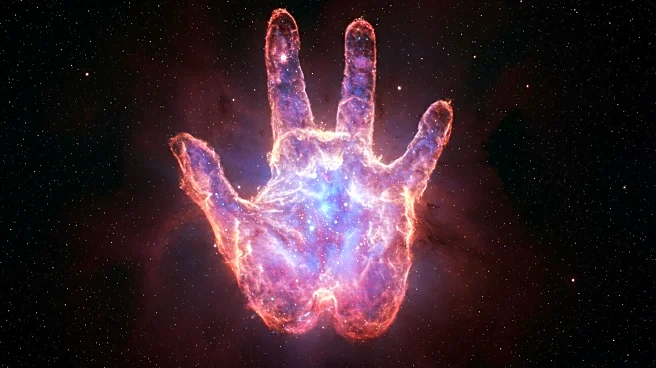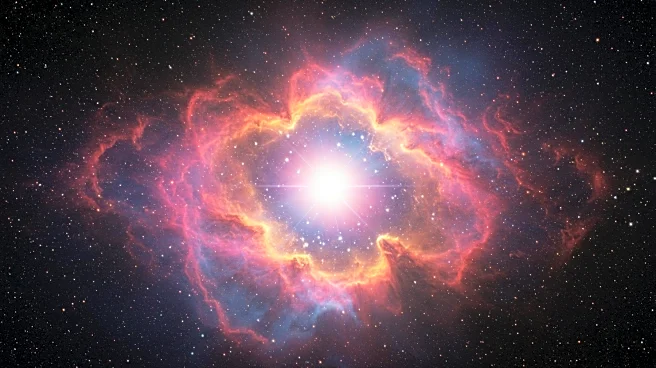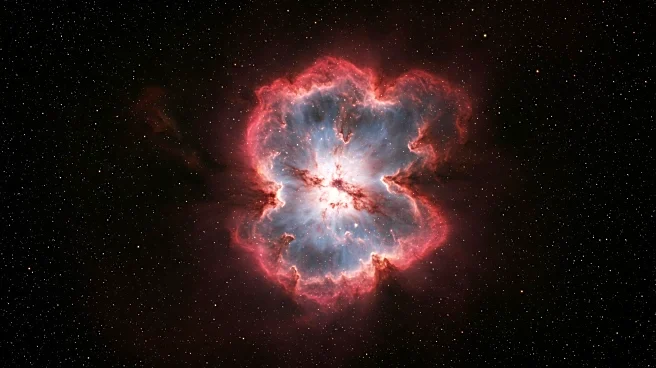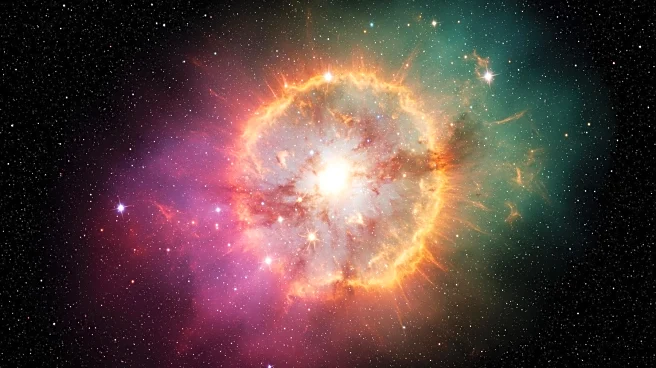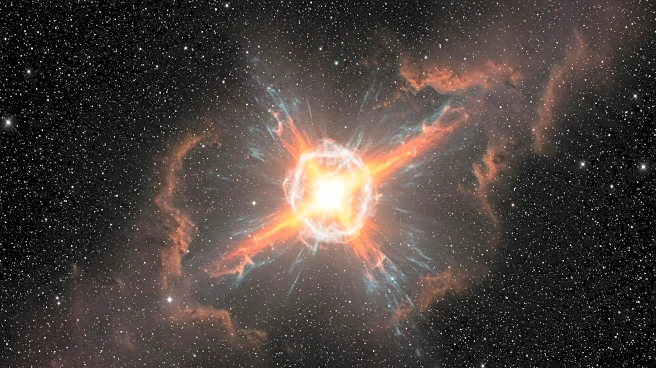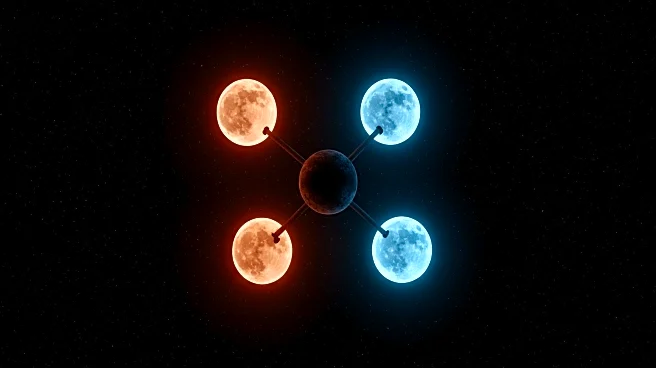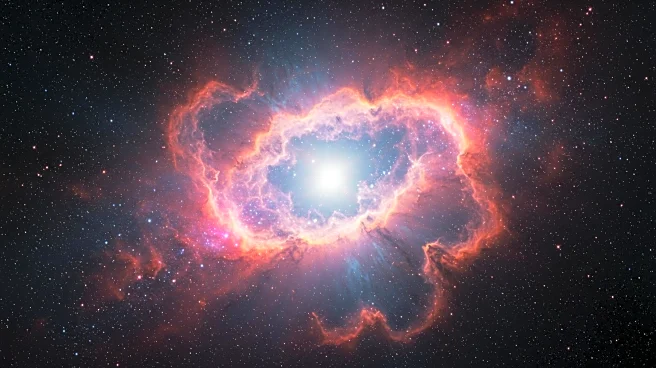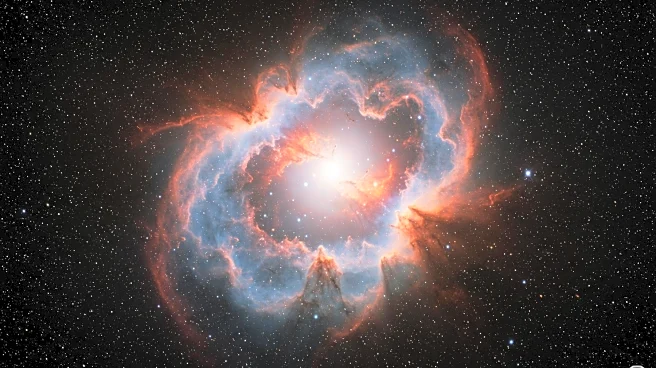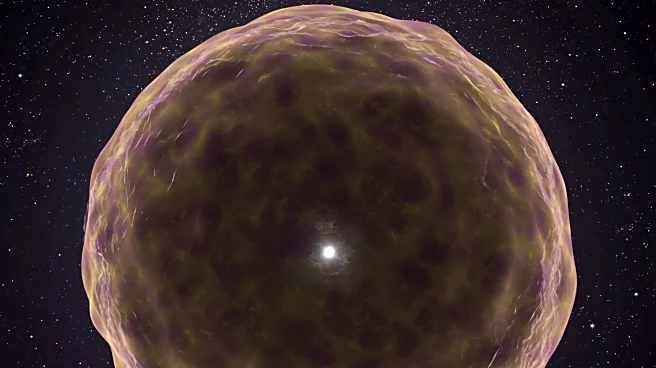What's Happening?
Astronomers have utilized a combination of telescopes to produce a detailed image of the nebula MSH 15-52, revealing a structure that some describe as resembling a hand. This nebula is centered around a pulsar, a rapidly spinning and dense remnant of an exploded star, located approximately 17,000 light-years from Earth. The image was created by combining data from NASA's Chandra X-ray Space Observatory and the Australia Telescope Compact Array (ATCA). The pulsar, designated B1509-58, is responsible for the intricate nebula that spans over 150 light-years. Despite the detailed imagery, researchers are still puzzled by certain aspects, such as the sharp boundary of X-ray emissions that appear to be the supernova's blast wave, which lacks the expected radio signal.
Why It's Important?
This development is significant as it enhances the understanding of supernova remnants and the complex interactions between pulsars and their surrounding environments. The detailed imagery could provide insights into the behavior of neutron stars and the processes following a supernova explosion. This research contributes to the broader field of astrophysics by offering a clearer view of cosmic phenomena that are otherwise difficult to study. The findings could have implications for theoretical models of star evolution and the lifecycle of stellar objects, potentially influencing future astronomical research and exploration.
What's Next?
Further research is anticipated to delve deeper into the peculiarities observed in the nebula's structure. Scientists aim to understand the absence of radio signals at the X-ray boundary and the overall dynamics of the pulsar and supernova debris. Continued observations and data analysis will likely be conducted to refine existing models and theories. The study, led by Shumeng Zhang of the University of Hong Kong, has been published in The Astrophysical Journal, indicating ongoing academic interest and potential for future discoveries.
